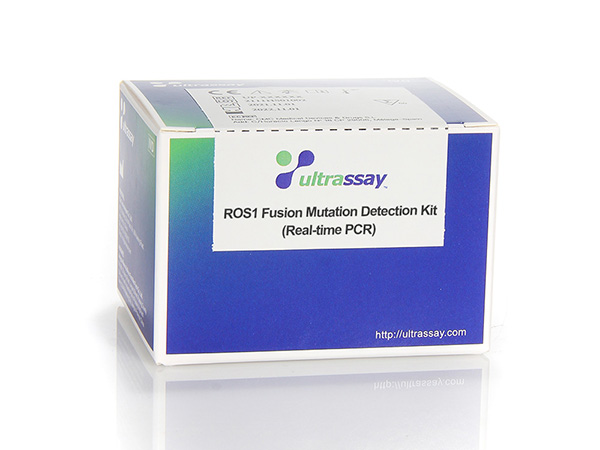ROS1 is a transmembrane tyrosine kinase of the insulin receptor family. ROS1 fusion gene has been confirmed as another important non-small cell lung cancer driver gene. As a representative of a new unique molecular subtype, the incidence of ROS1 fusion gene in NSCLC About 1% to 2% [1,2]. ROS1 mainly undergoes gene rearrangement in its exons 32, 34, 35 and 36. After it is fused with genes such as CD74, EZR, SLC34A2, and SDC4, it will continue to activate the ROS1 tyrosine kinase region. Abnormally activated ROS1 kinase can activate downstream signaling pathways such as RAS/MAPK/ERK, PI3K/Akt/mTOR, and JAK3/STAT3, thereby participating in the proliferation, differentiation and metastasis of tumor cells, and causing cancer [2]. Among ROS1 fusion mutations,
CD74-ROS1 accounts for about 42%, EZR accounts for about 15%, SLC34A2 accounts for about 12%, and SDC4 accounts for about 7% [3]. Studies have shown that the ATP-binding site of the catalytic domain of ROS1 kinase and the ATP-binding site of ALK kinase have a homology of up to 77% [4], so the ALK tyrosine kinase small molecule inhibitor crizotinib and so on have obvious curative effect in the treatment of NSCLC with fusion mutation of ROS1[5,6]. Therefore, detection of
ROS1 fusion mutations is the premise and basis for guiding the use of crizotinib drugs. This test kit is used to guide the medication of ROS1 inhibitors and provide the basis for personalized medicine for patients with non-small cell lung cancer.
UltraDx ROS1 Fusion Gene Mutations Detection Kit uses fluorescent probe real-time PCR technology to design specific primer probes for fluorescent detection for 14 fusion mutations of the ROS1 fusion gene and the target sequence of the internal control gene. The 5′ end of specific probe of 14 fusion mutations labeled FAM fluorophore as a reporter, and 5′ end of specific probe of internal control labeled HEX(VIC) fluorophore as a reporter, the 3′ end of specific probe labeled BHQ1 fluorophore as a quencher. When not bound to the target sequence, the fluorescent signals of the intact probes are suppressed by the quencher dye. During the PCR amplification step, hybridization of the probes to the specific single -stranded DNA template results in cleavage of the probe by the 5′ to 3′ exonuclease activity of the DNA polymerase resulting in separation of the reporter and quencher dyes and the generation of a fluorescent signal. With each PCR cycle, increasing amounts of cleaved probes are generated and the cumulative signal of the reporter dye increases concomitantly. Each reporter dye is measured at defined wavelengths, which enables simultaneous detection and discrimination of the amplified fusion mutations and the internal control. The qualitative detection of each mutation site in the sample is realized by 4 tubes of reaction buffer.
At the same time, the quality control of endogenous internal control is introduced as the quality control of reagents, RNA quality and the operation itself. Even if the RNA is degraded, the internal control can truly reflect the effective RNA amount in the system.
Recommended sample types: paraffin-embedded pathological tissue or sliced samples.
Applied Biosystems™ Real time PCR system 7500, ABI QuantStudio™5 Real-time PCR system, LightCycler® 480 PCR system, Bio-Rad CFX96 real-time PCR instrument. Ultrassay eQ9600 Real Time qPCR System etc.



